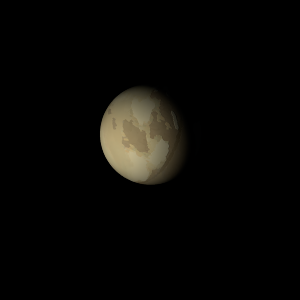|
|
Space Astro
|
Info for exoplanet "Yingjwu"
| Scientific (actual) data |
|---|
| Name | Kepler-1985 b |
| Planet status | Confirmed |
| Radius | 0.1981 |
| Orbital period | 3.42065 |
| Semi major axis | 0.0426 |
| Orbit eccentricity | 0 |
| Inclination | 82.03 |
| Discovered | 2017 |
| Updated | 2025-02-18 |
| Tzero tr | 2454970 |
| Impact parameter | 0.92 |
| Temperature (kelvin) | 1129 |
| Publication | Announced on a website |
| Detection type | Primary Transit |
| Radius measurement type | Primary Transit |
| Alternate names | KOI-2851 b, KOI-2851.01 |
| Star name | Kepler-1985 |
| Right ascension | 293.57° |
| Declination | 42.13° |
| Mag v | 15.22 |
| Mag i | 15.196 |
| Mag j | 14.068 |
| Mag h | 13.67 |
| Mag k | 13.556 |
| Star distance | 1015.27 |
| Star metallicity | 0.14 |
| Star mass | 0.877 |
| Star radius | 0.966 |
| Star sp type | G7V |
| Star temperature | 5370 |
| Star alternate names | KIC 6697605, KOI-2851, 2MASS J19341591+4207572 |
| Wikipedia article | Kepler-1985 b |
Back
| |
| Fictional info (?) |
|---|
| Suggested name | Yingjwu |
| Planet type | Hot planet |
| The planet telescopically displays the complete range of phases, similar to Venus and the Moon, as it moves in its inner orbit relative to Kepler-1985, which reoccurs over the so-called synodic period approximately every 139 days. |
| Atmosphere | Carbonyl sulfide | 65% |
| Hydrogen chloride | 24% |
| Ammonium hydrosulfide (NH4SH) | 6.9% |
| Molecular hydrogen | 3.1% |
| Ethane | 1.2% |
| Atmospheric pressure | 0.001 bar |
 |
| No known satellites |
| Google search for Yingjwu |
|
Website by Joachim Michaelis
|
|
|
|